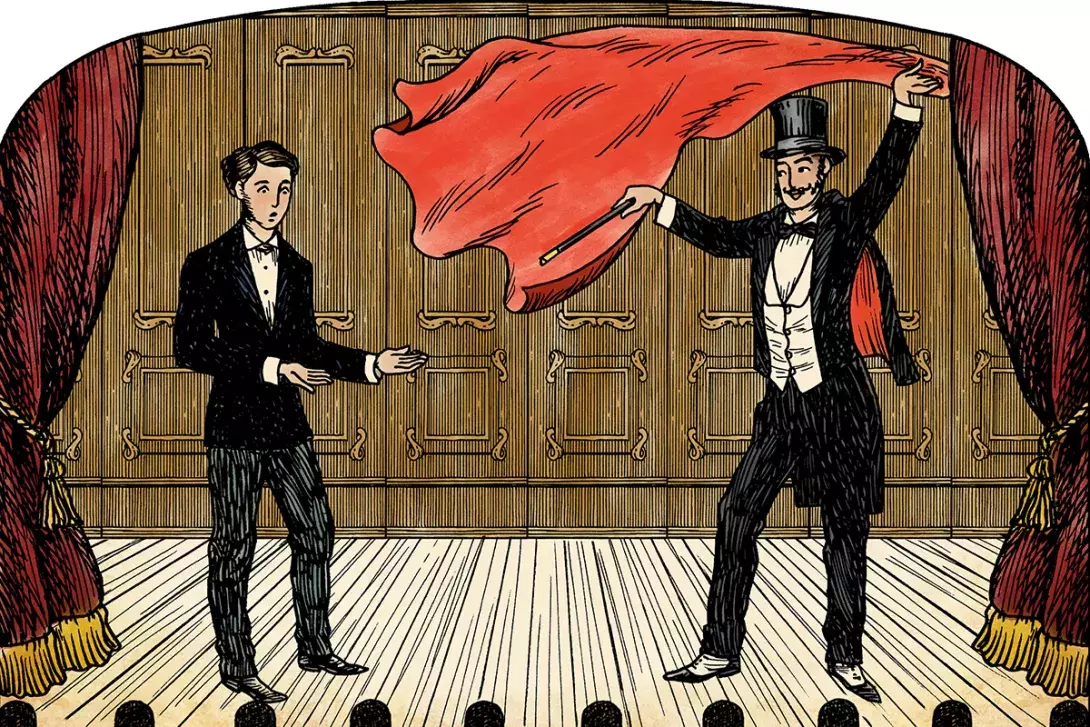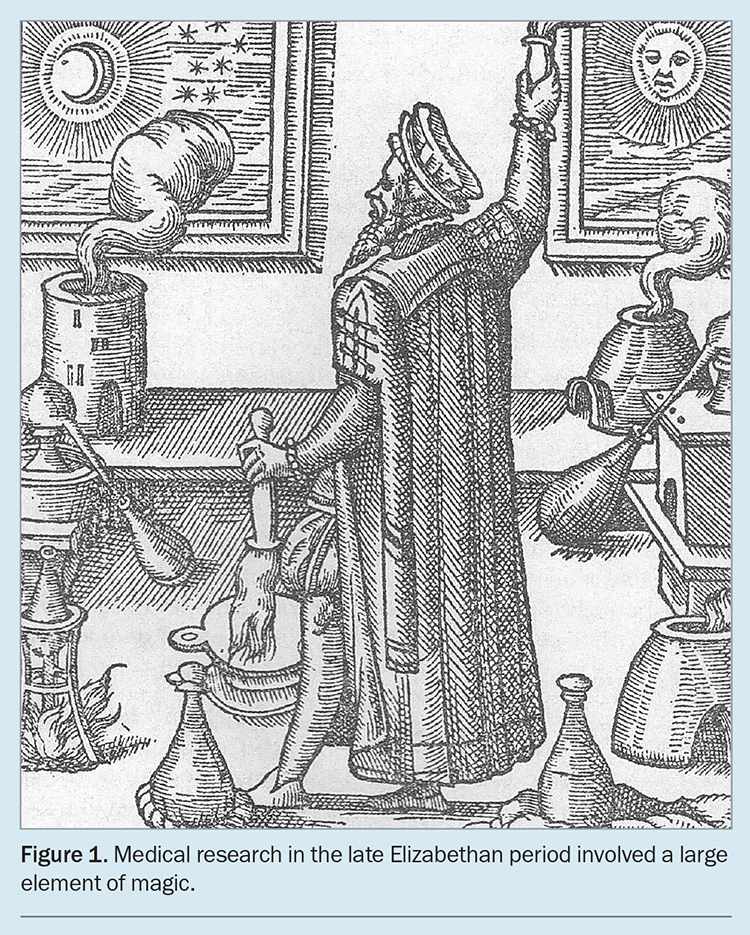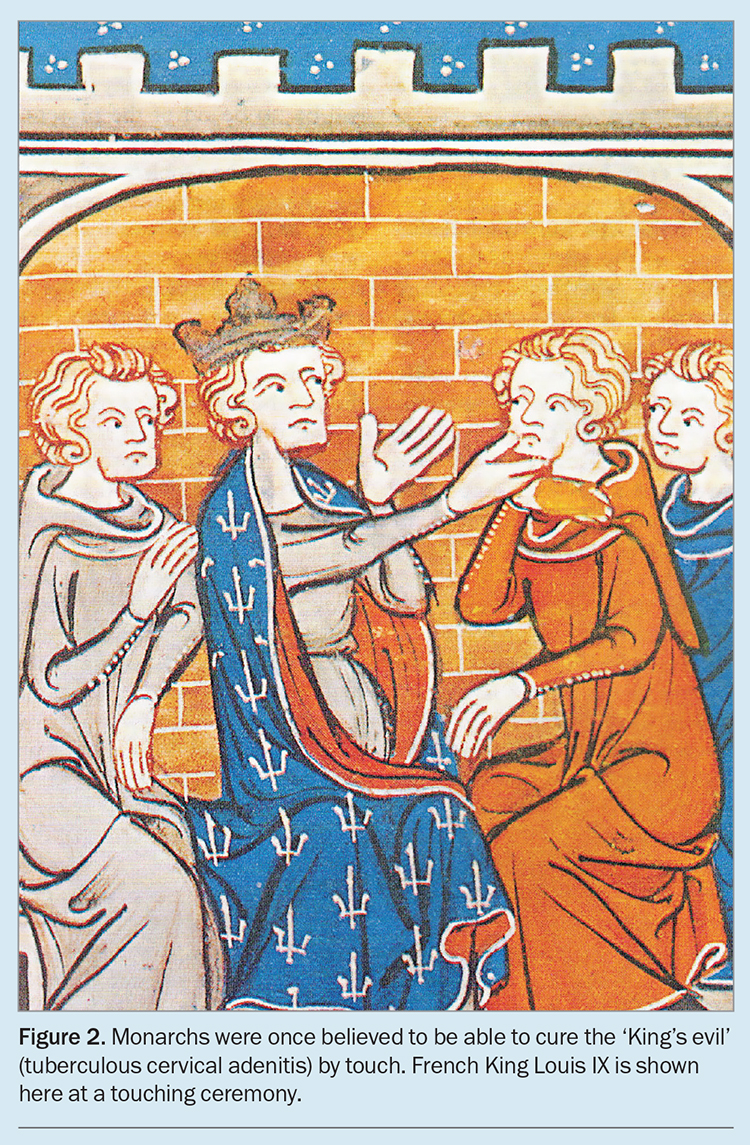Magic in medicine: what can be learned from curing warts?

Dr Ellard, revered former Editor of Modern Medicine of Australia and later, Medicine Today, and a distinguished psychiatrist, wrote many essays between the 1970s and early 2000s on society’s most controversial and vexing issues. These were published in various journals including Modern Medicine of Australia and Medicine Today, and some were also compiled and published as books. This essay ‘Magic in medicine’ originally appeared in the April 1999 issue of Medicine Today. It still resonates today. Magic and medicine have been clearly associated since the first recorded medical procedures. As we have learned more, science has rightly captured the field. But those of us who care for patients know that logic and science are not quite enough.
This essay must begin with a confession. In my first intern year, one of my tasks was to burn off warts in the dermatology outpatient clinic of the Royal North Shore Hospital in Sydney. I found the smell of fried warts repellent and wondered if there might not be a less disagreeable way of removing them.
In fact, there is a long history of other remedies. A traditional European folk cure is to conjure the wart into a snail and then impale the snail on a thorn so that as the snail withers away, the wart withers too. In the nineteenth century, Swiss girls would rub a stone on their warts and then leave the stone at a crossroad in the hope that the wart would be transmitted to the next passerby.1 I doubt that these procedures would have been approved by the consultant dermatologists of Royal North Shore Hospital.
Fortunately, I came across what was then a very recent publication in the British Medical Journal in which the author reported the cure of a case of congenital ichthyosiform erythroderma of Brocq by hypnosis.2 It seemed to me that if hypnosis could cure a dermatological condition with a name as long as that then warts should be a pushover.
There remained a problem, however. The dermatology clinic was a busy place; pragmatism was the order of the day. The spectacle of me attempting to hypnotise the queue of those bearing warts would attract attention and might raise a few eyebrows.
Then, inspiration arrived. I gave each patient the usual injection of local anaesthetic beneath the wart and explained that we had a powerful new remedy from Switzerland. The injection would make the wart feel numb, I said, and, in the next week or two, it will simply disappear. (You will understand that all this happened some decades ago when the medical world was less regulated.) In any case, the warts went away and the patients and I were equally satisfied. In a little while, I moved on to a different term, with other tasks that I felt that I could handle without the use of magic.
The expectation of relief
In the scenario described above, we had patients with a disorder coming to a therapeutic situation expecting relief, being told that they would receive it and responding accordingly. They had no reason to doubt what they were told. If at worst my experiment had failed, I would have used the orthodox remedy at their next appearance. The point is that I did not need to.
But what if they had known or strongly suspected that what I was doing was closer to magic than science?(Figure 1).
I was soon to discover the answer. One of my sons, then at school, developed an abundant crop of warts on both hands. He knew as well as I did that the folk remedy of rubbing warts with a stick and then burying the stick had absolutely no scientific basis at all. We decided to try it, treating only his preferred hand. The warts disappeared from that hand in about a fortnight and from the other hand in the next couple of weeks.
This is not to be wondered at. In 1965, Park and Covi reported a trial of 15 patients given sugar pills.3 The patients were told that the pills contained no active medication at all, but that other patients had had some relief from similar pills in the past. In the next week, 14 improved; the one who did not had a significant adverse event in his life at the time.
The interpretation of this particular trial is uncertain. The patients may have thought they were not being told the truth or that the doctors were mistaken about the efficacy of the substance administered. Once again, the recipients had a disorder, were in a therapeutic situation and were told that there is a benefit from the remedy offered.
There is a limit. To go to the reductio ad absurdum, let us suppose that you have migraine and I have an inert substance that has relieved migraineurs in the past. If I put it in your coffee and do not tell you, it will not do you any good.
My point is this. There is absolutely no substitute for scientifically-based medicine. If there is a proven remedy for a particular condition, there is no excuse for not using it with all the necessary skill. The appropriate pharmacological and procedural therapies must be used, but there is another aspect of medical practice that cannot be ignored if one wishes to help people.
This is nothing new. It may well be that most medical practice before the beginning of this century was based on this factor. Some physicians were aware of it, and some were not. Howard Brodie quotes Thomas Jefferson in the United States writing about the use of placebos in 1807 and other authors commenting on the same topic in the nineteenth century.4 More significantly, he quotes a 1952 British Medical Journal editorial that ‘hazarded the estimate that 40% of patients visiting general practitioners in England were given placebo prescriptions’.5
The uses of cyanocobalamin
Remember that the situation is more complex than it seems at first sight. Not long ago, oceans of cyanocobalamin were injected into large numbers of patients for all sorts of reasons, few being the appropriate indications. The substance is pharmacologically active and at least some physicians prescribing it believed it had a much wider range of indications than had been established scientifically.
In one study, the records of 1222 patients in a small rural clinic were reviewed. Of these patients, 120 had received at least one injection of cyanocobalamin. In only four cases did the medical records support the appropriateness of the injection. There were 48 patients still attending the clinic who had been receiving the injections for a mean of 9.9 years and a range of four to 24 years.
The main indication was fatigue – 41 patients identified fatigue as the symptom for which treatment was given and gave the treatment a mean effectiveness rating of 2.9 on a scale from 0 to 4. Weakness was reported by 35 patients, and the treatment was given a mean effectiveness score of 2.8. The following symptoms or reasons received a mean effectiveness score of 3.0 or greater:
- preventive medicine
- appetite suppression
- appetite stimulation
- potentiation of other medication
- insomnia
- constipation.
The patients were all interviewed and given the indications for appropriate injection of the medication. After that, 38% said that they would nevertheless seek out doctors who would give them the injections. In all, 25 of the 48 were willing to consider discontinuing the injections at least temporarily.6
What can a placebo do?
The removal of warts is a benefit but not a triumph. What can the mind achieve, therapeutically?
Let us start with the story of a simple experiment. Volunteers given glyceryl trinitrate constantly experienced tachycardia with variable headache and palpitations after each administration. They were then given inert tablets that tasted the same and the results were observed double-blind. Once again, the patients experienced tachycardia, occasional headache and palpitations.7
In clinical medicine, the results can be quite remarkable. In his book on the power of belief, Herbert Benson cites a number of studies. In one, 40% of patients with rheumatoid arthritis experienced at least a 50% reduction in the number of swollen joints and a 50% reduction in joint swelling and tenderness. Relying on their placebos, they found the improvements lasted six months or more.
In another study, a small handheld device called a transducer was used to massage patients’ faces to reduce pain and swelling and hasten healing after the removal of wisdom teeth. Studies were done in which the device was not switched on (but patients did not know) and other mock treatments were used. A significant difference was observed – in the order of 30% – between those who received mock treatment and those who received no treatment at all.8
In other studies quoted in Benson’s book, patients who had had myocardial infarctions received either beta blockers or a placebo. Those who did not adhere to their treatment (either the active medication or placebo) were 2.6 times more likely to die within a year of follow up than those who did as they were told. During a study of cholesterol-lowering drugs after infarction, only 15% of those who took 80% or more of their placebos died compared with 28% of those who adhered poorly to their placebos.9 Once again, one can argue about the mechanism whereby these results were achieved – perhaps those who do as they are told have other advantages as well, but the facts cannot be disputed.
The power of belief
To my mind, the most remarkable example of the power of belief is found in the anaesthetic procedure that in its day was called mesmerism. Before the introduction of gaseous anaesthetics in about 1848, some hundreds of major operations were performed in what was called mesmeric sleep. Large tumours were removed and limbs were amputated with no sensation of pain and, in most cases, no rise in the pulse or other evidence of distress (Figure 2).
Such is the power of placebos that they can also cause undesirable side effects – the nocebo response. In many studies, patients on the placebo report headaches, dizziness and so on. There are even two cases in the literature in which patients became addicted to placebos and had to continue to receive them.
The essential point is that in most therapeutic situations there are two important aspects: scientific medicine, and the influence of one person on another. To ignore either is imprudent because the best outcome will be obtained only if both are considered.
What must be done?
As we have seen, many remedies work quite well without a scientific basis. My argument is that one should strive for the best of both possible worlds – the greatest benefit from scientific medicine and the greatest benefit from the healing power of concern for the person. Concern about the disease is not enough.
What does the patient want?
Firstly, one must discover what the patient wants. This is not as obvious as it might seem. Generally, the answer will be ‘to be rid of the presenting problem’. Sometimes, the wish will be to be rid of the problem without taking orthodox medication, and sometimes, to be rid of it with the use of only ‘natural’ substances. Occasionally, the purpose of the exercise is to establish that the disorder exists because there are certain advantages to its possession, and its removal is the last thing that is desired.
One thing that emerges very clearly is that a substantial proportion of the Australian population are not getting what they want from medical practitioners. In 1996, it was estimated that we were spending a little under one billion dollars each year on alternative medicine and alternative practitioners. Some $621 million was spent on alternative medicines, which was almost exactly twice the patients’ contributions for all pharmaceutical drugs in the study year.
In the United States, where the structure of medicine is a little different, another study found that more visits were made to alternative practitioners than to all primary care physcians.’ 4 To reiterate, one is not going to make much progress until one knows what the patient wants.
Do we have a common goal?
One then needs to negotiate a common goal quite explicitly. When you have discovered in detail what patients want, you can decide whether or not you can provide it. If, for example, they insist upon taking remedies of their own choosing that contain substances about which no scientifically-based knowledge exists, you may find you cannot have a common goal, and it is better to say that than to struggle on in an unwinnable situation.
It is important to make it clear that achieving real progress will require patients and doctors working as partners, each with a very definite contribution to make. As part of this, you will need to emphasise the importance of sharing information and education. The more patients know, the more they feel in control of the situation and, very probably, the more compliant they will be with recommended medications. All this makes it clear to the patient that you really are interested in the outcome.
What knowledge should we share?
It is important to make it quite clear that you encourage questions, not because you know all the answers but because you need to share knowledge between you. The alternatives are clear enough. Sometimes, a patient complains that the doctor has all the power and either never says anything or never says anything intelligible. Occasionally, patients have the power – demands for pethidine and the like sometimes cause doctors to do things that get them into trouble. It is best if the power is shared.
Part of the educational process is explaining your conception of what has gone wrong in the patient’s functioning, what you propose to do to put it right, and – importantly – the knowledge that lies behind your decision. It takes about two minutes to explain how a double-blind trial is done and that such trials are the basis of scientific medicine. Doing this should make it clear that it is not a question of choosing between one belief system and another (orthodox versus alternative medicine), but that there are compelling reasons for taking a particular course. When the evidence is less than compelling, one must make clear why one nevertheless has a particular point of view. To do this, one must know why one is doing what one is doing – this involves continuing education.
Conclusion
There is unequivocal evidence to show that many people attend alternative practitioners, which is a sure sign that they are not getting what they want from orthodox practitioners. This is an unhappy situation for at least some of these people because in many cases, there will be a scientifically established form of management from which they might benefit. It is also an unhappy situation for the medical practitioners who lose their business or feel compelled to abandon science and join them.
The best outcomes will be achieved with a combination of science and sensitive collaboration between patients and doctors. In this article, I have shown one way of going about it. MT
References
1. Maple E. Magic, medicine and quackery. New York: AS Barnes, 1968: 16.
2. Mason M. A case of ichthyosiforrn erythroderma of Brocq treated by hypnosis. BMJ 1952; 2: 442-443.
3. Park LC, Cori L. Nonblind placebo trial: an exploration of neurotic outpatients’ responses to placebo when its inert content is disclosed. Arch Gen Psychiatry 1965; 12: 336-345.
4. Brody H. Placebos and the philosophy of medicine. Chicago: University of Chicago, 1980: 96-99.
5. The bottle of medicine [editorial]. BMJ 1952; 1: 149-150.
6. Lawthorne L, Ringdahl D. Cyanocobalamin injections for patients without documented deficiency. JAMA 1989; 261: 1920-1923.
7. Lang WJ, Rand MJ. A placebo response as a conditional reflex to glyceryl trinitrate. Med J Aust 1969; 3: 312-314.
8. Benson H. Timeless healing: the power and biology of belief. New York: Scribner, 1996: 32-33.
9. ibid., pp. 44-45.
10. Gauld A. A history of hypnotism. Cambridge: Cambridge University, 1992: 221-226.
I I. Mintz I. A note on the addictive personality: addiction to placebos. Arn J Psychiatry 1977; 134: 327.
12. Vinar O. Dependence on a placebo: a case report. Br J Psychiatry 1969; 115: 1189-1190.
13. MacLennan AH, Wilson DH, Taylor AW. Prevalence and cost of alternative medicine in Australia. Lancet 1996; 169: 569-573.
14. Eisenberg D, Kessler RC, Foster C. Unconventional medicine in the United States. N Engl J Med 1993; 328: 246-252.


